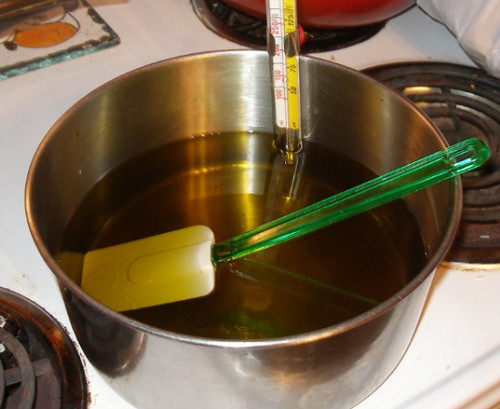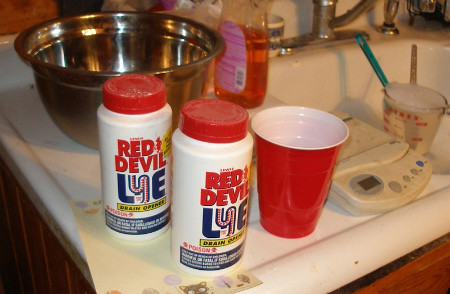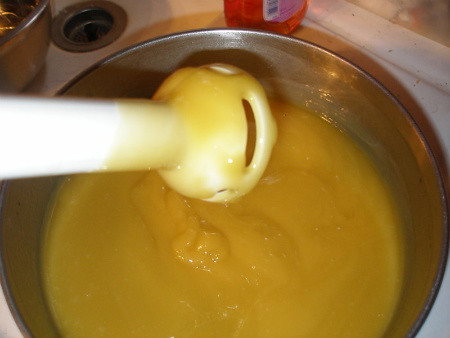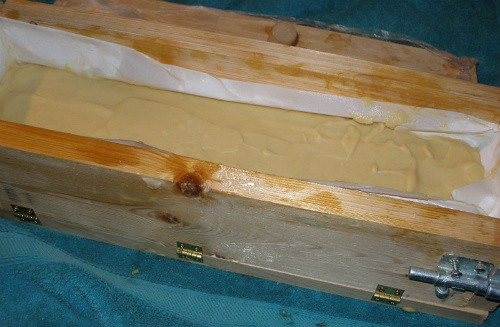





After the soap turns opaque, the reaction continues. I didn't take chemistry in college and I barely lived through it in high school, but in essence, the acids (the oils) and the base (the lye) use the water to combine and make little polymer chains. It's those little polymer chains that do the cleaning when you lather up in the shower: they attract and cling to particles of dirt and drag them around and down the drain. Something like that. The continuing reaction changes the appearance of the soap a second time during what's called the gel phase. No, it doesn't mean the soap is wobbling around like a jello mold; I have no idea why it's called the gel phase, but during this part of the process, the soap goes from opaque to transluscent as shown below. If you touch the outside of the mold during this phase you'll notice that the temperature is quite a bit warmer than it was when you originally poured the raw soap. This is why it's called "cold process": there's no external heat supplied to drive the chemical reaction, so all the heat produced is by the reaction itself. Nifty, huh? Anyway.. gel phase: The next twenty hours or so will allow the soap to continue reacting and end up with a nice, firm block of soap. After 24 or 36 hours (or even 48, if you think you can wait that long... I never can!), you can turn the soap out of the mold, cut it into bars, and put it on a paper-lined tray or table to cure. Four weeks is a long time to wait... must be patient... must be patient... must be patient....
The next twenty hours or so will allow the soap to continue reacting and end up with a nice, firm block of soap. After 24 or 36 hours (or even 48, if you think you can wait that long... I never can!), you can turn the soap out of the mold, cut it into bars, and put it on a paper-lined tray or table to cure. Four weeks is a long time to wait... must be patient... must be patient... must be patient....

3 comments:
I made some soap last summer and loved it, but then got carried away with dyeing yarn. This summer I think I will try my hand at some more soap making. The honey and beer shampoo bar sounds lovely.
Oooooh. I know the feeling. I lost about a year and a half of soap time to spinning and dyeing, and thanks partly to Rachael's burgeoning interest in things soapy I've just stuck my toe back in. Do you have a favorite recipe? >^.^<
Ooooohhhhhh!!! This looke very impressive... I wanna do it too... *checks calendar to see how long it is til summer break* This honey and beer bar sounds and looks so yum! I think I wanna do it as soon as possible.
Post a Comment